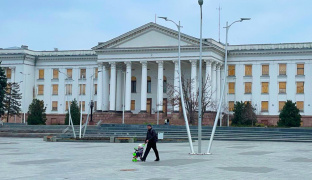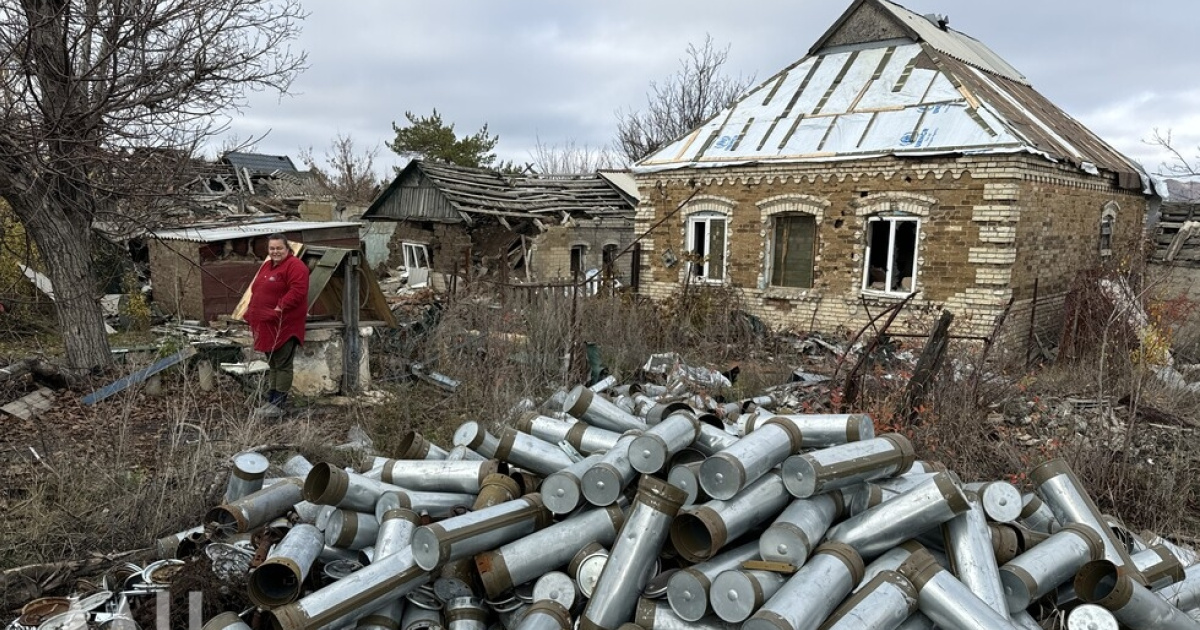
The summer campaign of the russian army, which the kremlin hoped to turn into a turning point in the war, ended in failure. Moscow set the goal of taking control of the entire territory of the Donetsk oblast by August; however, in reality, about a third of that region is still under the control of Ukrainian forces.
At the same time, the kremlin is trying to compensate for military failures with diplomatic maneuvers—pushing demands for the withdrawal of Ukrainian troops from the Donetsk oblast and creating informational pressure to push Kyiv and the West toward concessions.
Meanwhile, according to experts, the russian command is concentrating resources in the south of the Zaporizhzhia oblast, preparing new attacks that could become another attempt to turn the course of the war in its favor.
On why the russian summer offensive failed, what risks exist on the southern front, why putin will not stop at the Donetsk oblast, and whether a diplomatic end to the war is possible—the military expert and former spokesperson of the Ukrainian Armed Forces General Staff Vladyslav Selezniov spoke to OstroV.

– Recently, the General Staff of the Ukrainian Armed Forces reported that the russian summer offensive has effectively ended without results. What would you say about this?
– Yes, that is essentially the case. The russians really placed very high hopes on the summer campaign, building promises and plans for a large-scale advance. They had been preparing since spring, creating an informational effect, spreading theses that in summer they would achieve the greatest breakthrough. Propaganda messages contained absolutely fantastic forecasts, claiming that by August the russian army would completely occupy the entire territory of the Donetsk oblast. However, if we look at the real situation, we see a completely different picture: even now, about a third of the region’s territory remains under the control of Ukrainian troops.
All attempts by the enemy to change the situation (using various tactical approaches, deploying significant forces and resources) did not lead to the results they declared. Moreover, if we analyze the statements of the chief of the russian General Staff, Valery Gerasimov, who at every briefing talks about dozens of "liberated" settlements, "significant successes", and "successful encirclement" around Kupiansk, it turns out that all these statements do not correspond to reality. On the ground, it does not exist; in fact, it is a fabricated picture created for the internal russian audience.
Thus, we must understand that the summer offensive, which was widely announced and for which the russians really spent enormous resources, turned out to be a "soap bubble". And if we can speak about something concrete, it is only about the extremely high level of enemy losses. Over three months, they amounted to about one hundred thousand killed and wounded. This is a horrifying figure that absolutely does not correspond to the minimal territorial gains that were achieved.
– So, can it be considered that the summer offensive has already ended?
– I would say that the summer offensive is just one stage of a broader, overall strategic offensive operation of the russian army. It actually began back in October 2023, when combat operations were intensified in certain sections of the front, particularly in the Kupiansk and Lyman directions. Therefore, to say, "at the end of August everything stopped", would be incorrect. The russians have not stopped their attacks; they continue to look for weak points, continue to press where possible. But if we compare the scale of losses with the results, we see that the trends on the battlefield are absolutely unfavorable for the enemy.
Another characteristic feature is the change in the methods of conducting combat operations. The russians use armored vehicles significantly less because they lack them. Instead, they increasingly rely on infantry assaults. These attacks are carried out under the cover of forested areas—when the green canopy allows concealment of movement—and also by using dry dirt roads, which allow reinforcements to be delivered by cars and even motorcycles. But once the rains begin, the soils will become muddy, and the leaves will fall from the trees, these factors will no longer work, and enemy "fodder" assaults will become significantly more difficult.
Already now we see that the size of assault groups has decreased. If earlier there were groups of up to ten people going on the attack, now it is often groups of two to three people, sometimes even individual soldiers. And this directly reflects on the level of losses: if a few months ago we were recording more than a thousand russian killed and wounded daily, now this figure has decreased to 850-900. But this does not mean that the Ukrainian army is fighting less effectively. It only means that the enemy itself has reduced the scale of human resource use on the battlefield.
– On social media, information has appeared that the russians may be preparing a new serious offensive in the coming days. How real is this threat?
– Such a threat does indeed exist. We see a concentration of russian resources in the south of the Zaporizhzhia oblast. It is there that the enemy is trying to create conditions for an offensive, and I would not rule out the possibility of activation in the Orikhiv or Zaporizhzhia directions. This is an absolutely realistic scenario.
At the same time, the Ukrainian Defense Forces are systematically working to disrupt enemy logistics. This involves strikes on railway hubs on russian territory as well as actions in temporarily occupied areas. The goal is one: to slow down as much as possible the movement of echelons with equipment, ammunition, and personnel. And in this context, we are seeing results. Russian social media accounts also openly complain about the large-scale mining of the south of the Zaporizhzhia oblast by our troops, which significantly complicates the advance even for small infantry groups.
– Why this particular direction, and not, for example, the Donetsk oblast?
– I think the russian command has realized that their calculations on the northern directions, particularly in the Kharkiv and Sumy oblasts, turned out to be completely unrealistic. There they could not achieve tangible results, although they tried and looked for opportunities. On the Kupiansk direction, the enemy attempted to become more active, but logistics proved too complicated. Their main efforts were directed to the right bank of the Oskil, which means constant river crossings and transportation of equipment and ammunition under difficult conditions. In fact, the enemy is forced to hold positions disadvantageous to themselves. In the Donetsk oblast, the front has effectively stabilized.
The same is true in the Chasiv Yar area, where they create an image of supposed success. But in reality, the front there remains stable. The statements of their propagandists have nothing to do with reality.
Crossing the Dnipro river in the Kherson oblast looks completely unrealistic. The river is over a kilometer wide, and even attempts to attack end in disaster. Therefore, the only direction where they could at least theoretically achieve some tactical gains remains the southern Zaporizhzhia oblast. There they attempted to advance from the Kamianske area toward Stepnohirsk, and in certain sections even achieved limited tactical success. This, evidently, created in the russian command the illusion that they are capable of repeating such actions and expanding them into a larger operation.
But it should be emphasized: the fortifications that the Ukrainian army has built in this direction are extremely strong. They were created taking into account previous battles, because back in 2023 we saw active attempts by the enemy to attack precisely here. Then they also did not achieve significant results, although they expended enormous effort. And today the situation has not changed. The chances of the russians breaking through are minimal.
Despite this, for the kremlin this direction has special significance. Russia, at the level of official documents, declares its desire to "return" under its control all territories that it included in its own constitution. This includes the Donetsk and Luhansk oblasts, and parts of the Zaporizhzhia and Kherson oblasts. In other words, for them it is important to at least partially implement this scenario in order to show their own population and the world that russia is advancing in achieving its stated goals.
The kremlin continues to believe that Ukraine sooner or later will be forced to make concessions and give up part of its territories through diplomatic means. Therefore, they concentrate their troops precisely on those directions which, in their view, could become bargaining chips in the future.
– How do you assess the emergence of russian demands for the withdrawal of Ukrainian troops from the Donetsk oblast?
– This is a very telling moment. In reality, it shows that the enemy is looking for any options to achieve results. If they fail militarily, they start searching for political or diplomatic tools. That is why statements about the need for the withdrawal of Ukrainian troops from the Donetsk oblast appear.
But it must be clearly understood: even if Ukraine agreed to such a scenario, putin would not stop there. His strategic goal is the destruction of Ukraine as a state, the elimination of Ukrainian identity, the dismantling of Ukrainian society. Any concessions on our part he would perceive not as a compromise, but as weakness. And this weakness would only push him toward further aggressive actions.
Russian diplomacy works very actively, the ministry of foreign affairs team constantly seeks ways to influence the positions of both Ukraine and our partners. They develop numerous scenarios, variants of "peace initiatives", to force Kyiv to make concessions. But all these options come up against one thing: the resilience of the Ukrainian army and the support of international partners.
– And here it’s hard not to recall Donald Trump, who supposedly reacted favorably to this idea…
– Donald Trump often makes controversial, contradictory statements that cause a strong reaction in the world. But I am convinced that among world leaders there are still those who understand the inadmissibility of implementing such scenarios. If we are talking about transferring territories or making any concessions at Ukraine’s expense, this means legitimizing aggression, encouraging a terrorist state that commits genocide, ecological crimes, and missile strikes on civilians.
Moreover, this even goes beyond the bilateral track of "russia-Ukraine". This is about the security of all of Europe. If the world makes concessions today, tomorrow it will become a direct path to an even larger war. Therefore, I hope that in the end common sense will prevail.
– In your assessment, is there a possibility that the Ukrainian leadership will make concessions, for example, agree to withdraw troops from the Donetsk oblast?
– I believe such a scenario is impossible. If Ukraine makes concessions, it will inevitably lead to an internal explosion, to the destruction of unity within the country. It would mean a split in society and, in the long term, the destruction of the state itself. The kremlin is counting on exactly that, but we must understand: such a decision for Ukraine would be equivalent to capitulation.
The only reason one could imagine such a scenario is the complete military defeat of the Ukrainian army. That is, a situation where our troops would lose the ability to resist and would be physically forced to lay down their arms. But in the foreseeable future, I see no prerequisites for such a development. Not in a year, not in two, not in five years. On the contrary, the Ukrainian army has proven its ability to effectively hold the defense and, in some areas, to carry out successful counteroffensive actions.
In addition, our international partners fully understand: if Ukraine falls, the next will be the countries of Central and Eastern Europe. European leaders, in particular the German chancellor, have repeatedly stated this. Therefore, it is critically important for them that the Ukrainian army remains combat-capable and that aid is delivered on time and in the necessary volumes.
We must also remember that today our own defense-industrial complex is working. Ukraine is gradually increasing the production of weapons, shells, and equipment. This is another factor that makes the scenario of capitulation absolutely unrealistic.
– And what about russia? Is it ready to freeze or suspend the war?
– I am convinced that it is not. Russia will not agree to freeze the war. The russians have their deadlines, their internal plans and obligations. The kremlin understands that any pause would benefit Ukraine, since we would use it to restore our strength, receive new weapons supplies, and prepare troops. That is why the russian army continues to operate at the limits of its capabilities.
Of course, we cannot say that russia has already completely exhausted its military potential. There are supplies from Iran, from North Korea, and it is not excluded that supplies could also come from China. But if we talk about economic potential, the situation is completely different. It is gradually being depleted.
Ukrainian strikes on russia’s oil refining infrastructure and attacks on logistics facilities are leading to a decrease in oil and petroleum product sales. And this is the main source of revenue for the russian budget. If the current trend continues, in a year and a half to two years, the russian economy could plunge into a serious crisis, essentially into a collapse, which will not allow them to maintain the current level of external aggression.
Here we can draw a historical parallel. Let us recall the russian empire: in 1913 it reached the peak of its economic development, but just four years later, in 1917, two revolutions took place, and the state essentially collapsed. The same could repeat now. The modern russian federation does not have the powerful economic resources that the empire possessed a hundred years ago. And if four years were enough back then, now it may take even less.
Therefore, when we talk about prospects, we must take into account not only the military factor but also the economic one. Because it may well become decisive in the future.
– But at the same time we see that putin is received in China and the US, he is not in complete international isolation. Doesn’t this undermine your forecast?
– Yes, indeed, there is no complete isolation. Russia maintains contacts with China, India, and part of the so-called “Global South”. That is true. But we need to look at the situation more deeply. Even those countries that maintain contacts with moscow do so not for ideological reasons, but purely for pragmatic ones – to gain benefits. None of them is ready to support putin without limits.
Moreover, the world is gradually realizing that russia is an aggressor state that violates all international norms. And although political isolation is not yet complete, reputational isolation has already happened. Putin is perceived as a war criminal who should be sitting on the defendants’ bench in The Hague, not as a legitimate leader.
This is a fundamental shift, and it will only intensify. Let us recall how in the 1930s the world turned a blind eye to Hitler’s actions and how that ended. Today we see very dangerous parallels. If the world makes the same mistake again, it could turn into a catastrophe. But there is hope that historical lessons have been learned.
– Right now, russian troops are conducting exercises in Belarus. Should we expect a threat or provocations from that direction?
– At present, CSTO troops’ exercises have begun on the territory of Belarus, with about two thousand servicemen involved. The program is working through different scenarios, including episodes related to the use of nuclear weapons. This was stated outright by the Chief of the General Staff of Belarus.
But it is important to understand: these elements are more in the nature of propaganda demonstrations rather than real preparation for the use of the nuclear arsenal. In other words, it is more about creating an informational effect than an actual threat.
Much more attention should be paid to the strategic exercises that will begin in mid-September. These will be large-scale joint russian-Belarusian maneuvers. They plan to involve more personnel, a wider range of equipment, as well as the practice of complex actions. The program of these exercises includes coordination between moscow and Minsk, practicing special operations, enhanced cooperation between intelligence services, testing logistics, and synchronizing the actions of the two governments. This is already serious cooperation that could potentially pose a certain threat.
At the same time, I rely primarily on the statements of our military intelligence. If something truly dangerous is being prepared from the side of Belarus, we will definitely receive a warning from the intelligence head, Kyrylo Budanov. And another important marker is the behavior of Western diplomats in Kyiv. If the ambassadors of the US or EU countries begin packing their things, evacuating families, and moving their activities to Warsaw or other cities, then that will be a serious alarm signal.
Until then, there is no reason to panic. We have a strong enough grouping in the north of the country – in Volyn, Rivne, Zhytomyr, and Kyiv oblasts. These territories are reliably fortified and defended. Therefore, potential threats from Belarus should be assessed soberly: they exist, but they are unlikely to become real in the near future. Russia is capable of exerting pressure from an informational point of view, creating a psychological effect, but they do not have sufficient resources for a real large-scale offensive.
– If we sum up the results of the summer campaign, what did the russian army gain after three months of active fighting?
– Over the summer, the russians concentrated a huge grouping – about seven hundred thousand servicemen on different sections of the front. And despite this, despite favorable weather and natural conditions, in three months of active attacks they managed to advance only a few hundred square kilometers. If measured weekly, that is about one hundred to one hundred and fifty square kilometers per week. But on the scale of the front, such achievements have absolutely no strategic significance.
In fact, the russian army has demonstrated that it is capable of conducting only local tactical actions. They achieved some isolated successes, took control of small villages or positions, but this did not affect the overall operational-tactical picture. At the strategic level, the situation remained unchanged.
And the main thing is the price they paid for it. Their losses over the summer amount to tens of thousands killed and wounded. These are not only mobilized men but also career military personnel, assault units, equipment, and armored forces. So the result of the campaign can be formulated very clearly: minimal territorial gains at the cost of maximally high human and material losses.
This is very symptomatic and telling. The kremlin declared big goals, promised a massive breakthrough, but in the end received only yet another proof of its own failure. And it is precisely this imbalance between costs and results that today is the main characteristic of the russian summer offensive campaign.
By Vladyslav Bulatchik, OstroV





